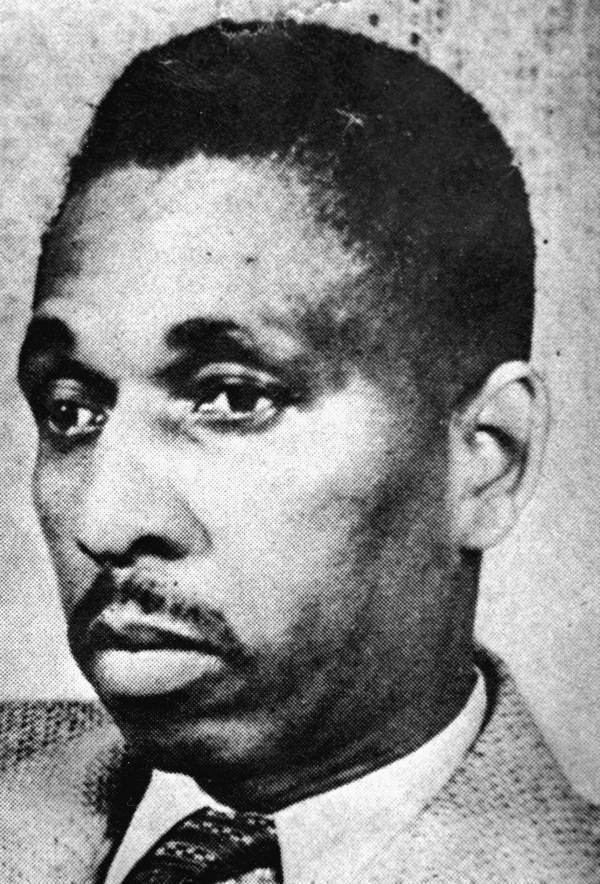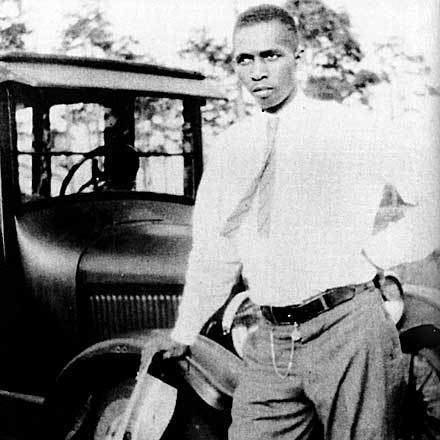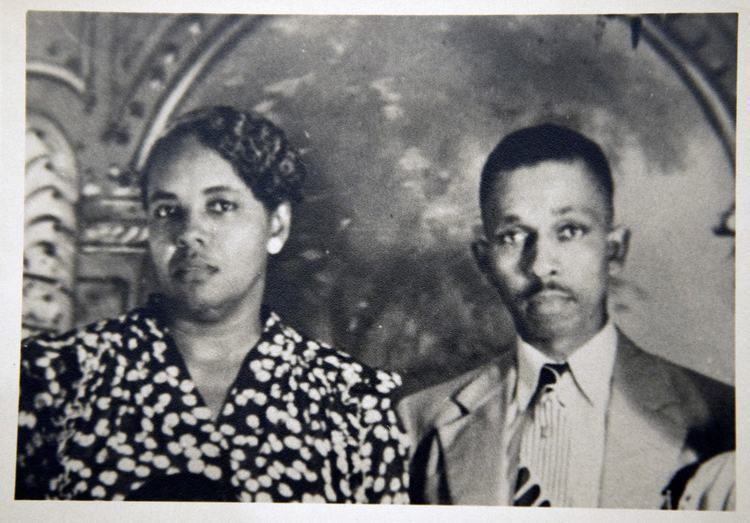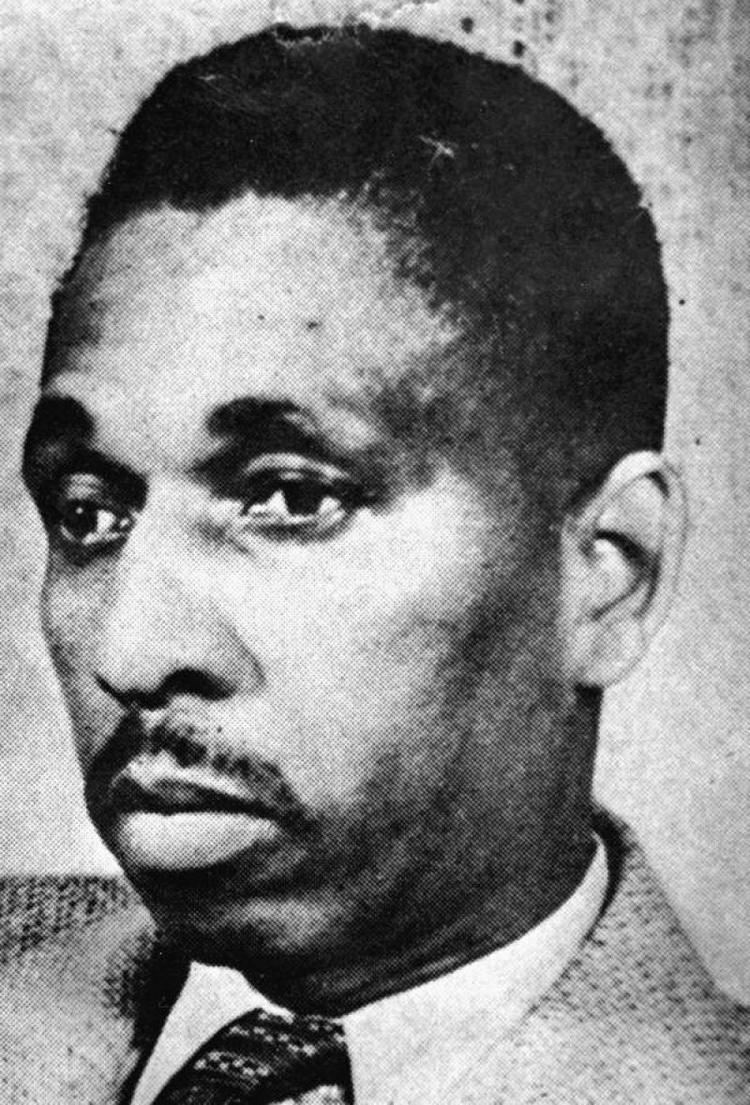Website Harry Moore on pbs.org Name Harry Moore | Role Educator | |
 | ||
Died December 25, 1951(1951-12-25) (aged 46)Seminole County, Florida, United States Occupation Educator, civil rights pioneer Spouse(s) Harriet Vyda Simms Moore Assassinated December 25, 1951, Seminole County, Florida, United States Education Bethune-Cookman University | ||
Freedom never dies the legacy of harry t moore pvw
Harry Tyson Moore (November 18, 1905 – December 25, 1951) was an African-American educator, a pioneer leader of the Civil Rights Movement, and founder of the first branch of the National Association for the Advancement of Colored People (NAACP) in Brevard County, Florida.
Contents
- Freedom never dies the legacy of harry t moore pvw
- Civil rights leader harry t moore honored in brevard
- Early life and family
- Civil rights activism
- Groveland case
- Murder
- Legacy and honors
- 21st century investigation
- References

Harry T. Moore and his wife, Harriette Vyda Simms Moore, also an educator, were the victims of a bombing of their home in Mims, Florida on Christmas night 1951. He died in an ambulance on the way to a hospital in Seminole County while she died January 3, 1952, at the hospital in Sanford, Florida. Forensic work in 2005-6 resulted in the naming of the probable perpetrators as four Ku Klux Klan members, all long dead by the time of the investigation. The Moores were the first NAACP members to be murdered for civil rights activism; Moore has been called the first martyr of the early stage of the Civil Rights Movement.

In the early 1930s, Moore had become state secretary for the Florida chapter of the NAACP. Through his registration activities, he greatly increased the number of members, and he worked on issues of housing and education. He investigated lynchings, filed lawsuits against voter registration barriers and white primaries, and worked for equal pay for black teachers in public schools.

Moore also led the Progressive Voters League. Following a 1944 US Supreme Court ruling against white primaries, between 1944 and 1950, he succeeded in increasing the registration of black voters in Florida to 31 percent of those eligible to vote, markedly higher than in any other Southern state. In 1946, he and his wife were fired from the public school system because of his activism, and he then worked full-time for the NAACP.
Civil rights leader harry t moore honored in brevard
Early life and family
Harry's father, Johnny Moore, was involved in the Air Line Railroad and ran a small retail store in front of his house. Johnny started having health issues when Harry was 9 years old and died in 1914. His widow, Rosa, tried to manage alone but failed to do so.
Civil rights activism
In 1934, soon after the birth of their daughters, the Moores founded the Brevard County chapter of the NAACP. Moore also helped organize the statewide NAACP organization.
Groveland case
In July 1949, four black men were accused of raping a white woman in Groveland, Florida. Ernest Thomas fled the county and was killed by a posse; the other three were arrested and beaten while held in custody, forcing two to confess. Rumors accompanied the case against a background of post-war tensions resulting from problems in absorbing veterans into jobs and American society. In Groveland, a white mob of more than 400 demanded that the sheriff, Willis V. McCall, who had hidden the prisoners to protect them, hand the prisoners over for lynching. The mob left the jail and went on a rampage, burning buildings in the black district of town. McCall asked the governor to send in the National Guard, but six days were needed to restore order.
The three young men, one only 16, were found guilty by an all-white jury. The judge sentenced 16-year-old Charles Greenlee to life in prison; Sam Shepherd and Walter Irvin were sentenced to death.
Executive Director of the Florida NAACP, Harry T. Moore, organized a campaign against what he saw as the wrongful convictions of the three men. With NAACP support, appeals were pursued. In April 1951, a legal team headed by Thurgood Marshall won the appeal of Shepherd and Irvin's convictions before the U.S. Supreme Court. A new trial was scheduled.
While transporting Shepherd and Irvin to the new trial venue in November 1951, Sheriff McCall claimed the two handcuffed men attacked him in an escape attempt. He shot them both, and Shepherd died at the scene. Irvin survived his wounds; he later claimed to NAACP and FBI officials that the sheriff shot both him and Shepherd in cold blood. Harry T. Moore called for an indictment against Sheriff McCall and called on Florida Governor Fuller Warren to suspend McCall from office.
Murder
Six weeks later on Christmas night, 1951, on the Moores' 25th wedding anniversary, a bomb went off beneath the couples' house in Mims, Florida. Both were fatally injured; Moore died on the way to the hospital in Sanford, Florida. His wife died from her injuries nine days later at the hospital in Sanford.
Moore has been called the first martyr in the Civil Rights Movement. He was the first NAACP official murdered in the civil rights struggle.
The murders caused a national and international outcry, with protests registered at the United Nations against violence in the South. The NAACP held a huge rally in New York, and in other cities, too. In many respects, the protests over the Moores' murders were a dress rehearsal for the Civil Rights Movement. The NAACP sponsored a fundraising event at Madison Square Garden, where a song entitled "The Ballad of Harry Moore" was performed, with lyrics by the renowned poet Langston Hughes.
The State of Florida called the Federal Bureau of Investigation (FBI) to head the investigation, but the case was never solved. The FBI was convinced that the Ku Klux Klan had committed the bombing and identified a number of local Klansmen as suspects, but was never able to find enough evidence to break the case. Eventually, the FBI indicted seven Klansmen for lying about their involvement in other racial violence, hoping that the pressure of the indictments would force some of the Klansmen to crack and testify about the Moore case. But the ploy didn't work, and the indictments were eventually dismissed. The FBI eventually closed the Moore investigation in 1953.
The case has been reopened three times: in 1978 by Brevard County, in 1991 by the Florida Department of Law Enforcement (FDLE), and in 2005 by then Florida Attorney General Charlie Crist. In October 2006, three weeks before he won the Republican primary for governor, Crist held a press conference in Mims and claimed to have "resolved" the case. Although he admitted that his investigation found no new evidence, Crist named four dead Klansmen as the likely perpetrators.
In the next few weeks, however, the Crist investigation was roundly criticized by Moore scholars, FDLE investigators, and newspaper editorial boards, and was largely dismissed as a political attempt to win black votes (particularly after the Crist campaign admitted to filming a campaign TV ad with Evangeline Moore, although it was never used because of the controversy.) Over the years, there were rumors that Sheriff McCall was involved in the Moore bombing, but no evidence was ever found of that.
When the Moores were killed, the risk to civil rights activists and any blacks in the South was high and continued to be so. According to a later report from the NAACP's Southern Regional Council in Atlanta, the homes of 40 black Southern families were bombed during 1951 and 1952. Some, like Harry Moore, were activists whose work exposed them to danger, but most were either people who had refused to bow to racist convention or were simply "innocent bystanders, unsuspecting victims of random white terrorism."
For example, bombing was prevalent in Birmingham, Alabama in the 1950s, used by independent KKK groups to intimidate middle-class blacks moving into new neighborhoods.
Legacy and honors
Although the story of the Moores' lives receded into obscurity for years, in the late 20th century, interest in them has been revived by books, documentaries, and a new investigation of their murders, and memorials have been named or designated in their honor. For example:
21st century investigation
The state twice returned to the Moore murders but was unable to file charges, since most of the men whom it suspected in the crime had died.
In 1999, journalist Ben Green published a book based on his research of the case: Before His Time: The Untold Story of Harry T. Moore, America's First Civil Rights Martyr. His research had gone deeply into FBI files.
Green's book was followed by a Public Broadcasting Service (PBS) show about Moore's life, Freedom Never Dies: The Legacy of Harry T. Moore (2000).
In 2005, Florida Attorney General Charlie Crist re-opened a state investigation of Harry and Harriette Moore's deaths. The Moores' only surviving daughter, Juanita Evangeline Moore, encouraged Crist in the efforts to uncover the identity of her parents' killers.
Forensics teams combed the former site of the Moores' house for evidence (the site is now within a memorial park). On August 16, 2006, Crist announced the results of the work of the state Office of Civil Rights and the Florida Department of Law Enforcement. Rumors linking Sheriff Willis V. McCall to the crime were proven false. Based on extensive evidence, the state concluded that the Moores were victims of a conspiracy by members of a Central Florida Klavern of the Ku Klux Klan (KKK).
The investigators published a report naming the following four individuals, all of whom had reputations for violence, as having been directly involved:
